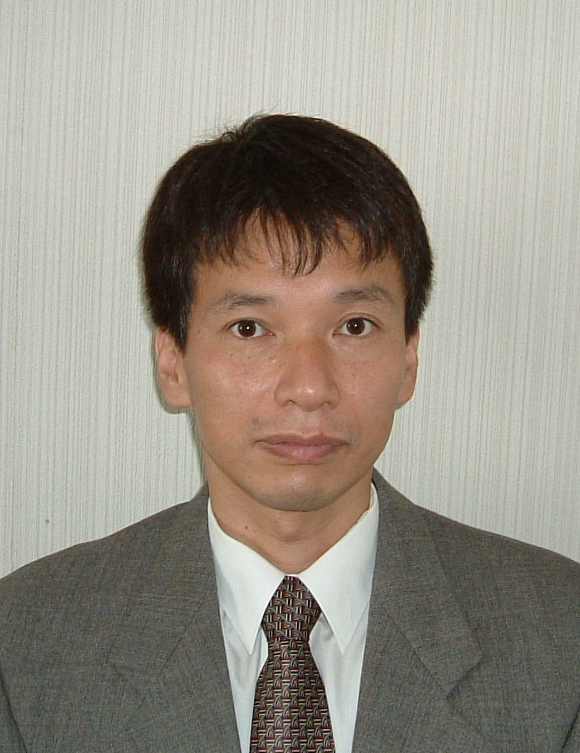Invited Speakers
Vasiliy Krivtsov
Professor, Reliability Engineering, University of Maryland, USADirector, Reliability Analytics, Ford Motor Company, USA
Speech Title: V2C (Vehicle to Cloud) Communication for Prognostics and Advanced Reliability Analysis
Abstract: With the emergence of modern technologies in the automotive industry (V2C - see Fig. 1, big data, machine learning, etc.), innovative methods of reliability and prognostics data analysis have emerged too. The talk will introduce modern reliability techniques such as models with time-dependent (sensor-based) predictors, deep survival models, IoT condition-based reliability maintenance, etc. The discussion will be illustrated by use cases from the author’s corporate and consulting experience.

Figure 1. V2C (Vehicle to Cloud) Communication System (Ford patent US20160163130A1)
Tsuyoshi Minami
Associate Professor, University of Tokyo, JapanSpeech Title: Real-sample analysis using organic transistor-based chemical sensors
Abstract: Real samples contain abundant chemical species playing crucial roles in environmental assessments, food analysis, and diagnosis fields. Conventionally, large-sized analytical instruments have been widely applied to real-sample analysis owing to their accuracy. However, the applicability of such a well-established instrumental approach is still a concern in on-site analysis because of the complicated detection principle that requires trained personnel and time-consuming operation. Herein, the presenter introduces an approach for the development of chemical sensor devices based on organic field-effect transistors (OFETs) (Figure 1). OFETs are electronic devices showing switching characteristics by applying voltage. Owing to their beneficial device properties, OFETs functionalized with appropriate molecular recognition materials contribute to sensitive detection over conventional electrochemical sensing methods. Biological materials such as enzymes and antibodies have been employed owing to their favorable specificities to analytes based on the lock-and-key recognition principle. However, detectable analyte structures are limited by a library of these biological materials. Therefore, synthetic receptors based on molecular recognition chemistry are promising approaches in the design of recognition sites. In this study, molecularly imprinted polymers (MIPs) were applied to molecular recognition materials for selective detection. MIPs provide three-dimensional recognition networks against specific analytes because a pre-organized structure made of a template (i.e., analyte) and functional monomers can be optimized by quantum chemical calculation methods. Such optimized MIP structures contribute to selective detection even in the presence of interferents. In contrast, the inherent cross-reactivity of supramolecular receptors can be applied to simultaneous detection by using pattern recognition methods. This presentation will discuss the usability of this approach for the realization of OFET-based chemical sensor devices based on fusion technologies of organic electronics, molecular recognition chemistry, and polymer chemistry.

Figure 1. Conceptual figure of an OFET-based chemical sensor functionalized with various molecular recognition materials.
Koichi Takiguchi
Professor, Ritsumeikan University, JapanSpeech Title: Recent advances in integrated-optic signal processing devices based on optical Fourier transform
Abstract: I report on recent advances in integrated-optic signal processing devices using a slab star coupler-type optical discrete Fourier transform (DFT) circuit [1], [2].
First, I explain the application of the optical DFT circuit to a demultiplexer of an optical orthogonal frequency division multiplexing (OFDM) signal [3]. Spectrally efficient optical communication with flexible capacity is required in the prospective adaptive photonic network [4]. Optical OFDM is one of candidates to contribute to this type of photonic network. In this talk, I demonstrate our gate-free integrated-optic tunable filter that can demultiplex optical OFDM signals with various number and symbol rate sub-carrier channels [5]. The filter consists of tunable couplers, an array of delay lines, and the optical DFT circuit. We can tune the number and/or the symbol rate of demultiplexed optical OFDM channels by selecting the delay lines with the tunable couplers. Optical timing gates were normally attached to the OFDM filter output ports with a view to extracting the effective time of the filtered channels [1], [2]. In [5], we removed the optical gates and substituted a high-speed photodetector for the gate with a view to achieving completely passive demultiplexing of the various capacity optical OFDM signals.
Optical logical gate circuits are regarded as significant components of photonic accelerators [6]. The photonic accelerators are used for increasing the processing speed and complementing the functions of existing electronic circuit-based computer systems by utilizing superior properties of lightwaves including coherence, high-speed processing, broadband performance, multiplexing capability, and low power consumption. In this talk, I report on our integrated-optic gates including a coherent exclusive OR (XOR) gate composed of the optical DFT circuit [7], [8]. The use of the DFT circuit enables us to realize processing of an arbitrary number of input bits, which cascaded coherent two-bit gates with the directional coupler configuration are weak in [9]. I explain the configuration, operating principle, and preliminary experimental results regarding the optical XOR gate. The optical XOR gate is useful for encryption/decryption and error detection of optical signals.
[1] K. Takiguchi et al., Opt. Lett., 36, 1140, 2011.
[2] K. Takiguchi et al., Photonics Technol. Lett., 31, 1327, 2019.
[3] A. J. Lowery et al., Opt. Fiber Technol., 17, 421, 2011.
[4] O. Gerstel et al., IEEE Commun. Mag., 50, s12, 2012.
[5] K. Takiguchi et al., OSA Continuum, 4, 2319, 2021.
[6] K. Kitayama et al., APL Photonics, 4, 090901, 2019.
[7] K. Takiguchi et al., in Proc. Optica Advanced Photonics Congress 2024, ITu2B.3, Quebec City, Canada.
[8] K. Takiguchi et al., in Proc. FiO/LS 2024, JW4A, Denver, USA.
[9] C. Peng et al., ACS Photonics, 5, 1137, 2018.
Keywords: optical signal processing, integrated-optics, optical Fourier transform, optical OFDM, optical logical gate circuit
Acknowledgements: This work was supported in part by JSPS KAKENHI Grant Number 23H04811.
Updated soon...



